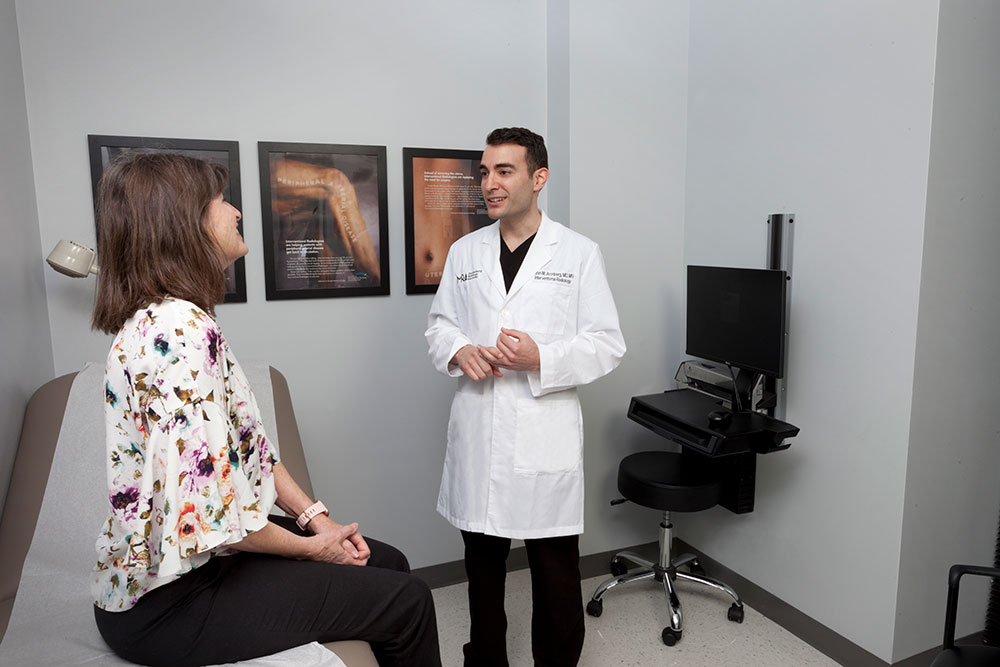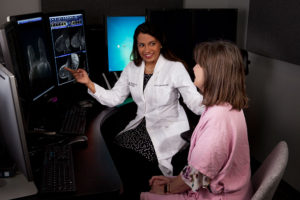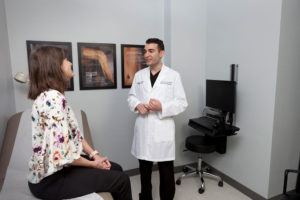Breast Imaging
A patient-first approach to breast imaging for patients in North Carolina.
At Mecklenburg Radiology Associates, we care about women and their health. We exceed expectations with personalized comfort and technological excellence. Convenience, communication, and attentiveness to our patients and their referring clinicians drive our best-in-class accuracy, timeliness, and survival rates.

Our Breast Imaging radiologists have specialized training in detecting and treating breast disease. Having trained at several of the most advanced institutions around the country, they can bring cutting-edge tools and techniques to breast imaging centers throughout North Carolina.

We care for our patients for a lifetime. We see all of our patients for yearly mammograms and sometimes more frequently when needed. We have made our process – from screening to diagnosis – as efficient as possible so that our patients spend as little time as possible at our centers and as much time as they can enjoying life.

We continue to develop new ways to provide convenient imaging services by the radiologists you trust. We offer various breast imaging techniques at each location, including 3D mammograms and MRI. We are the right choice for women looking to get the most out of their breast imaging experience.

Our Breast Imaging radiologists have specialized training in detecting and treating breast disease. Having trained at several of the most advanced institutions around the country, they can bring cutting-edge tools and techniques to breast imaging centers throughout North Carolina.

We care for our patients for a lifetime. We see all of our patients for yearly mammograms and sometimes more frequently when needed. We have made our process – from screening to diagnosis – as efficient as possible so that our patients spend as little time as possible at our centers and as much time as they can enjoying life.

We continue to develop new ways to provide convenient imaging services by the radiologists you trust. We offer various breast imaging techniques at each location, including 3D mammograms and MRI. We are the right choice for women looking to get the most out of their breast imaging experience.
- Diagnose benign (non-cancerous) breast conditions like cysts or calcifications
- Diagnose malignant (cancerous) tumors
- Guide a needle during a breast biopsy
A mammogram is a medical imaging test that uses low-dose x-rays to create images of the breast. The exam helps in the early detection and diagnosis of breast cancer. A highly trained radiologist reads and interprets the mammogram. A mammography technologist receives training to position the patient and breast correctly on the machine, operate the mammography unit, and acquire the images.
A 3-D mammogram, also known as digital breast tomosynthesis (DBT), is an advanced form of breast imaging where multiple breast images are acquired from different angles and reconstructed into a three-dimensional imaging set consisting of multiple “slices” of the breast. 3D mammography allows the radiologist to evaluate the breast tissue layer by layer better, improving early breast cancer detection.
The American Cancer Society (ACS), American College of Radiology (ACR), and the National Comprehensive Cancer Network (NCCN) recommend an annual screening mammogram for women starting at age 40. A screening mammogram can detect early breast cancer in women without symptoms.
A diagnostic mammogram is performed for women with clinical symptoms, including breast lumps, focal breast pain, or nipple discharge. Our radiologists can also use diagnostic mammography to follow up on abnormal findings detected on a screening mammogram.
Ultrasound is a safe and non-invasive test that does not use ionizing radiation. It produces images of the breast tissue using sound waves. An ultrasound probe and gel are placed on the skin to image the area of interest. A breast ultrasound is performed to evaluate breast symptoms and follow up on abnormal findings detected on a clinical breast exam, a screening mammogram, or breast MRI.
Breast magnetic resonance imaging (MRI) is an advanced technology that uses a magnetic field to create detailed images of the breast. It is used to supplement a mammogram or as a screening tool for women at high risk for breast cancer. Other uses are to evaluate the extent of disease after a breast cancer diagnosis and to detect silicone breast implant rupture. Breast MRI does not use ionizing radiation.
A needle biopsy is a minimally invasive procedure performed by a specialized radiologist. During a biopsy, small tissue samples are removed from an area in the breast so that a pathologist can examine it for disease. The radiologist guides the needle into the breast using ultrasound, mammography (also known as a stereotactic biopsy), or MRI as image guidance.

